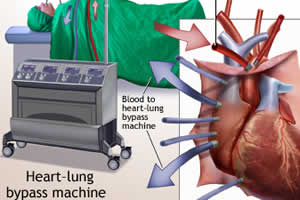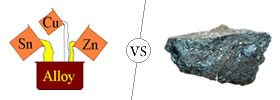Difference between Bypass Surgery and Open Heart Surgery
Key Difference: A bypass surgery is used for treatment of the narrowed arteries. A detour or a bypass is created around the section of a blocked artery. This new pathway is created by using a graft. Open heart surgery refers to a type of surgery in which the chest wall is surgically opened and heart is exposed. This surgery is performed on the muscles, valves, or arteries of the heart. The function of the heart during this surgery is conducted by a heart-lung machine.

 Open heart surgery refers to a type of surgery in which the chest wall is surgically opened and the heart is exposed. This surgery is performed on the muscles, valves, or arteries of the heart. The function of the heart during this surgery is conducted by a heart-lung machine. During this surgery, heart beating is temporarily stopped and the demand of oxygen is fulfilled by a heart-lung machine. A variant of open heart surgery is known as the beating heart surgery. In this type of surgery, the heart is not stopped from beating and the surgeon performs the surgery. Coronory Artery Bypass Surgery (CABG) is one of the common open-heart surgeries in the United States.
Open heart surgery refers to a type of surgery in which the chest wall is surgically opened and the heart is exposed. This surgery is performed on the muscles, valves, or arteries of the heart. The function of the heart during this surgery is conducted by a heart-lung machine. During this surgery, heart beating is temporarily stopped and the demand of oxygen is fulfilled by a heart-lung machine. A variant of open heart surgery is known as the beating heart surgery. In this type of surgery, the heart is not stopped from beating and the surgeon performs the surgery. Coronory Artery Bypass Surgery (CABG) is one of the common open-heart surgeries in the United States.
Comparison between Bypass Surgery and Open Heart Surgery:
|
|
Bypass Surgery |
Open Heart Surgery |
|
Definition |
A bypass surgery is used for treatment of the narrowed arteries. A detour or a bypass is created around the sections of a blocked artery. |
Open heart surgery refers to a type of surgery in which the chest wall is surgically opened and heart is exposed. This surgery is performed on the muscles, valves, or arteries of the heart. |
|
Used for |
Treatment of coronary arteries in the heart, the femoral arteries in the groin or the popliteal arteries behind the knee. |
Heart Valve Replacement, Coronary Artery Bypass Grafting, and several other congenital and acquired heart problems |
|
Risks |
Mentioning some of the risks involved in the surgery -
|
Mentioning some of the risks involved in the surgery -
|
|
Potential Candidate for the surgery |
|
|
|
Types |
|
|
Image Courtesy: my.clevelandclinic.org, averaorg.adam.com









Add new comment